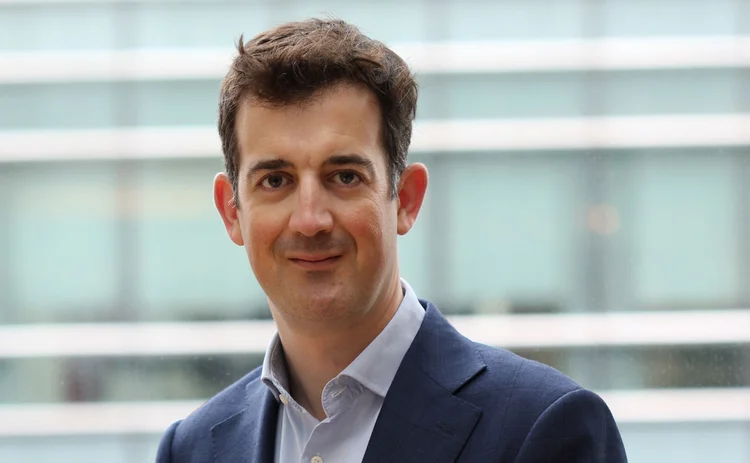
Derivatives client clearer of the year: JP Morgan
Risk Awards 2021: bank avoided tech snags and margin call surprises that plagued peers during crisis

The extreme market volatility unleashed by the Covid-19 pandemic last year tested bank clearing businesses to the limit, resulting in operational mishaps that hurt both the banks and their clients. JP Morgan is a rare exception.
The seeds of the bank’s success were sown years ago when it started investing in its clearing technology platform and its front-office risk management team. In 2020, the platform did not buckle when the market turmoil led to a steep rise in clearing volumes, while JP Morgan’s risk team monitored a host of metrics to ensure the bank had funding for potential large margin calls.
This did not go unnoticed by clients.
JP Morgan’s clearing service was “rock solid” during the chaos of March and April 2020, says an executive at a large UK-based asset manager who works with several clearing banks.
“In days where markets were moving to the tune of multiple standard deviations, JP was very calm,” he adds. “Others were getting increasingly nervous about getting cash in the door.”
A senior source at a mid-tier bank that clears through JP Morgan agrees, saying there was “no stress [from JP Morgan] to get cash from us” for margin calls from central counterparties (CCPs).
In March, after a jump in trading volumes in futures and options, operational bottlenecks developed in trade processing. There were missed margin payments, and give-up trades left on the books of the wrong clearing brokers as a result of delays. Some clearing brokers were left with uncollateralised overnight exposure to buy-side clients. Bank of America even feared “CCP systemic issues”.
No part of the trade processing system – clearing houses, clearing banks or software vendors – has escaped the blame. The head of clearing at a large US bank is blunt about the role that some of the bank’s peers played in the gridlock: “Their infrastructure broke down during Covid.”
Not at JP Morgan, though. There “things went smoothly” in March and April, says the senior source at the mid-tier bank.
In days where markets were moving to the tune of multiple standard deviations, JP was very calm. Others were getting increasingly nervous about getting cash in the door
Executive at a large UK-based asset manager
“During the peak period, we noticed that they had some delays in processing give-up positions but nothing that caused any issues on our side. It was addressed by them in close to real time and I would say it was acceptable, given the volumes,” he adds.
In March, clearing volumes reached a record for many benchmark equity, credit, interest rate and commodity benchmarks across multiple exchanges. At JP Morgan, client clearing volumes were three times average daily volumes of 2019 at the peak of the coronavirus crisis.
The operational backlogs that afflicted cleared trades also led to a large number of trade breaks. This then required a time-consuming effort by futures commission merchants (FCMs), or clearing banks, to match them up again.
The task was made easier at JP Morgan thanks to a tool developed in-house, called Intelligent Analyzer. Using machine learning techniques, the software scans the information emailed in by clients and identifies trade breaks.

“When the pandemic hit, we were able to scale up [the tool] reasonably quickly to extract trade break material,” says Anthony Fraser, head of global clearing operations at JP Morgan. “The ability to speed up our extraction of key information and the investigation process was a really important contributor to our ability to provide transparency to clients on what was happening with their breaks.”
One constraint on Intelligent Analyzer’s speed was the system of the counterparty to each broken trade since resolving such trades requires the agreement of both parties to the transaction.
It wasn’t just the investment in new technologies that paid off for JP Morgan during the most frenetic trading periods of 2020. A growing trend towards electronic execution over the past five or so years had been a cue for the bank to expand the capacity of its established clearing technology, “to ensure that everything flows through effectively”, says head of clearing Nick Rustad.
The rise in electronic trading has been accompanied by greater use of trading algorithms, many of which execute orders near market close. This means there is now more clearing to be done towards the end of the clearing day.
On top of that, exchanges have extended trading hours in recent years, producing a double whammy of higher trading volumes and a shorter window between the end of the trading day and the end of the clearing day when transactions can be cleared.
JP Morgan’s ability to support high clearing volumes proved particularly useful during the crisis. “As market liquidity deteriorated during that period, we saw a shift in execution from voice or block into more electronic execution,” Rustad notes.
In addition to robust technologies, JP Morgan benefited from a thorough approach to risk management during the Covid-19 crisis. At a time of funding stress, some clearing banks had to scrape together the cash to meet surprise margin calls. But JP Morgan’s risk team, together with relationship managers and the treasury team, worked to ensure no large margin calls came as a surprise.
This risk team kept a close eye on daily metrics across cleared client portfolios, such as the contingent risk of market moves, intraday liquidity and live client profit and loss, among other data. The team also monitored the liquidity risk of JP Morgan’s clearing business.
This approach chimes with that recently proposed by Pedro Gurrola-Perez, head of research at the World Federation of Exchanges.
We’ve been delivering a consistent message for a number of years. We’ve been committed to the clearing business when others wobbled
Nick Rustad, JP Morgan
CCPs’ procyclicality mitigation tools, such as margin floors, are not sufficient, he argues in a January 12 paper. Other measures are needed, he writes, including liquidity management by market participants that takes into account the possibility that margin calls and requirements may soar during periods of stress.
JP Morgan’s clearing business avoided a liquidity crunch last year also because the bank had earmarked a large amount of cash and other safe assets for meeting intraday margin calls. The scale of this financial commitment partly reflects JP Morgan’s confidence in its profitable clearing unit.
“We’ve been delivering a consistent message for a number of years,” Rustad says. “We’ve been committed to the clearing business when others wobbled.”
Half-hearted attempts at client clearing include those by Royal Bank of Scotland. In the middle of the market maelstrom in March, the bank shut its client clearing and execution business for futures and options trading. A source familiar with the unit said at the time that it had suffered from underinvestment and “death by a thousand cuts”.
JP Morgan’s commitment to the clearing business is underlined by its extensive research on various aspects of clearing, such as CCP margin models and product margin levels. The upshot is not just better-informed risk management by the bank but also direct benefits for clearing clients.
“When it comes to a number of what-ifs, like what if a customer goes down, what happens if another FCM at a CCP goes down, we get the best answers from JP Morgan,” says a source at a European asset manager.
The worst of the coronavirus market turmoil may be over, but JP Morgan is playing a prominent part in banks’ efforts to strengthen the clearing system ahead of the next crisis.
Banks have zoomed in on a spate of contract-level margin breaches in March 2020. Such a breach occurs when initial margin (IM) for a contract falls below the marked-to-market value of that contract.
The FIA, which lobbies for the futures, options and cleared derivatives markets, appointed JP Morgan’s Rustad as its chair in October and, under his leadership, published recommendations to improve CCPs’ margin models.
The suggestions include introducing margin floors to prevent margins becoming too low during calm periods. Low peacetime margins raise the risk of sharp IM hikes when markets hit a rough patch.
“I think the crisis really exposed significant flaws in CCPs’ initial margin models, particularly for exchange-traded derivatives,” Rustad says. “The size of these IM increases… they were procyclical and exacerbated the crisis with negative spillover effects into broader market.”
Only users who have a paid subscription or are part of a corporate subscription are able to print or copy content.
To access these options, along with all other subscription benefits, please contact info@risk.net or view our subscription options here: http://subscriptions.risk.net/subscribe
You are currently unable to print this content. Please contact info@risk.net to find out more.
You are currently unable to copy this content. Please contact info@risk.net to find out more.
Copyright Infopro Digital Limited. All rights reserved.
As outlined in our terms and conditions, https://www.infopro-digital.com/terms-and-conditions/subscriptions/ (point 2.4), printing is limited to a single copy.
If you would like to purchase additional rights please email info@risk.net
Copyright Infopro Digital Limited. All rights reserved.
You may share this content using our article tools. As outlined in our terms and conditions, https://www.infopro-digital.com/terms-and-conditions/subscriptions/ (clause 2.4), an Authorised User may only make one copy of the materials for their own personal use. You must also comply with the restrictions in clause 2.5.
If you would like to purchase additional rights please email info@risk.net
More on Awards
Clearing house of the year: LCH
Risk Awards 2025: LCH outshines rivals in its commitment to innovation and co-operation with clearing members
Best use of machine learning/AI: CompatibL
CompatibL’s groundbreaking use of LLMs for automated trade entry earned the Best use of machine learning/AI award at the 2025 Risk Markets Technology Awards, redefining speed and reliability in what-if analytics
Markets Technology Awards 2025 winners’ review
Vendors jockeying for position in this year’s MTAs, as banks and regulators take aim at counterparty blind spots
Equity derivatives house of the year: Bank of America
Risk Awards 2025: Bank gains plaudits – and profits – with enhanced product range, including new variants of short-vol structures and equity dispersion
Law firm of the year: Linklaters
Risk Awards 2025: Law firm’s work helped buttress markets for credit derivatives, clearing and digital assets
Derivatives house of the year: UBS
Risk Awards 2025: Mega-merger expected to add $1 billion to markets revenues, via 30 integration projects
Interest rate derivatives house of the year: JP Morgan
Risk Awards 2025: Steepener hedges and Spire novations helped clients navigate shifting rates regime
Currency derivatives house of the year: UBS
Risk Awards 2025: Access to wealth management client base helped Swiss bank to recycle volatility and provide accurate pricing for a range of FX structures







